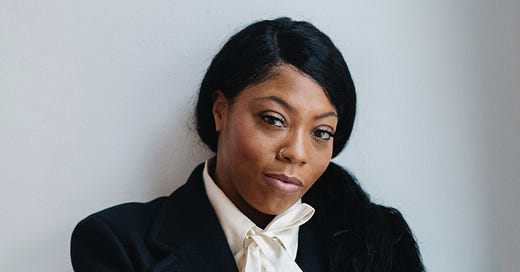Photo by Sora Shimazaki on Pexels
Hey there everyone,
I’ve spent time this week preparing for an upcoming training. I’ve been reading some really great articles and book chapters. One of them, “Redefining Female Power: The Myth of the Selfless Therapist,” talks about the ways female therapists navigate the patriarchal constructions of womanhood and femininity.
Within the heteronormative binary of patriarchy, there are two genders, male and female, said to be expressions, at the level of behavior, of the biological sexual difference between men and women. These normative gender expressions are represented back to us by the dominant culture, which also racializes gender. What the dominant culture represents as “White womanhood” is often quite different than that of “Black womanhood” or “Asian womanhood.”
Women whose personality traits or relationships to power are coded as male/masculine in patriarchy can be punished, shamed, or accused of withholding care, empathy, and flexibility in their relationships with others. They can also be subject to homophobia and violence if they are seen as transgressing gender in ways that indicate they may not be straight—regardless of their actual sexual desire or sexual identity.
In the context of therapy, a woman therapist may be expected to have a “softer” relationship to her own authority and expertise than a male therapist. A woman may shy away from moving into direct conflict with a client, for fear of being read as overly aggressive or cold. She may also not voice or take care of her own needs, either physically or economically, for fear of looking “selfish”—that is, for refusing her socially prescribed gender role.
The author, Ellen L. Wright, explains:
All therapists carry within themselves models of gender that encompass cultural and familial expectations and prohibitions. . . . For most female therapists the issue of pursuing a successful practice elicits powerful countertransference issues, because it violates a societal prohibition against placing one’s interests ahead of another’s, especially a person in need. Charging fees commensurate with male colleagues and holding to contractual agreements regarding missed sessions are common areas of internal conflict for female therapists. . . . Disinclined to accept the labels of “bitchy,” “pushy,” or “aggressive,” women acting in accordance with societal messaging and its implicit undervaluing of their work do not use negotiation as a path to career advancement.
Wright exhorts therapists to consider enacting what the author and practitioner Nancy McWilliams calls “psychological androgyny,”—to be able to shift and move across ways of being that are labeled masculine or feminine. There is an implicit ask, on the part of Wright, for the therapist to do enough personal work around gender socialization, and the corrosive aspects of patriarchy, to be able to confidently inhabit gender roles, norms, and behaviors that are discordant to their “apparent” gender. (I put “apparent” in quotes here, to highlight the ways our gender is received by others, or “read” by others, which may or may not match how we understand our own gender.) The more willing we are to transgress gender norms within the therapeutic context, the more room we give our clients to experiment with their own gender. Then we can ask, together, how gender norms may be limiting our emotional range.
The therapist Ali Kimmell reminds us in “Belonging: Queer Theory’s Contribution to Modern Analytic Groups,” that a focus on gender and patriarchy often excludes the being and personhood of trans and nonbinary identified people. They get pushed outside the frame of the male/female binary which, in patriarchy, is understood as the only form in which gender can be inhabited or expressed.
Because I’ve been reading these articles, I’ve been returning again to the question of how I express my own gender, and how I have internalized masculine and feminine definitions of power. I’ve been noticing what behaviors I feel are my “right” to express, and which ones make me fear retaliation, backlash, or even just confusion from others.
So for today’s post, I thought I’d generate some questions about gender and throw them out there for your consideration. The questions are, obviously, applicable both inside and outside the therapeutic space. If you are a therapist, you might want to take the questions as a window into how you practice. If you’re in therapy yourself, you might want to use the questions as a way to talk about what you learned about gender, and if you’ve been praised or punished for certain expressions of your own gender.
You can also use these questions as a way to better understand the choices you make about how you take care of yourself and others. You can use them to think about what power is, and what it means, and the ways you are comfortable and uncomfortable with your own power.
Please have fun with this—I mean it!—the more playful you can be, in terms of thinking about gender, the more room you can have to see it as a space you can contest or change.
Some questions to get you started:
What did you learn in your family of origin about your gender?
Did the models of gender in your family of origin match the models of gender you received from the dominant culture?
Is your perception of your body congruent or incongruent with the dominant culture’s representation of what a “valuable,” “beautiful,” “strong,” or “commanding” body looks like?
How does your perception of your gender identity interact with your perception of how much power you have, socially and interpersonally?
What are the gender messages you receive from the institution or organization in which you work?
Have you worked in places where the leadership was composed of people with gender expressions that were at odds with the dominant culture?
When you think of the words power, aggression, and advocacy, what feelings and images arise in you? Are those words attached to ethics and values? Are they linked to ideas about gender?
How do you “catch yourself” when you make assumptions about others’ gender presentation and what it means about who they are or how you expect them to behave?
How are you most often “read” by others, in terms of your gender and gender expression, and does that reading match your own experience of your gender?
Are there spaces or relationships in your life where you are allowed to express aspects of gender that the dominant culture would label as “opposite” to your current gender identity?
Thanks, as always, for reading and listening. You might want to gather with a group of people to answer these questions, to broaden the discussion. Enjoy!
Take care out there —
xo
Rebecca
Sources:
Kimmel, A. (2021). Belonging: Queer theory’s contribution to analytic groups, Chapter 3 in Yoon, Masselink, and Weiss (eds.). Women, Intersectionality and Power in Group Psychotherapy Leadership. New York: Routledge Taylor & Francis, pp. 33-51.
Wright, Ellen L. (2021). Redefining female power: the myth of the selfless therapist, Chapter 7 in Yoon, Masselink, and Weiss (eds.). Women, Intersectionality and Power in Group Psychotherapy Leadership. New York: Routledge Taylor & Francis, pp.93-107.













Share this post